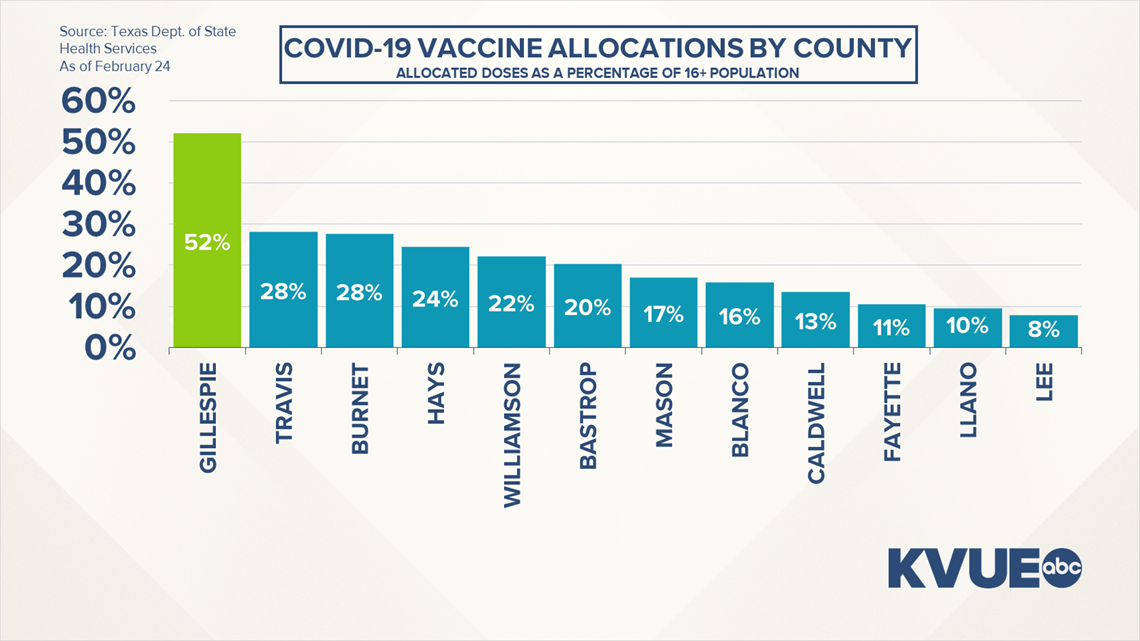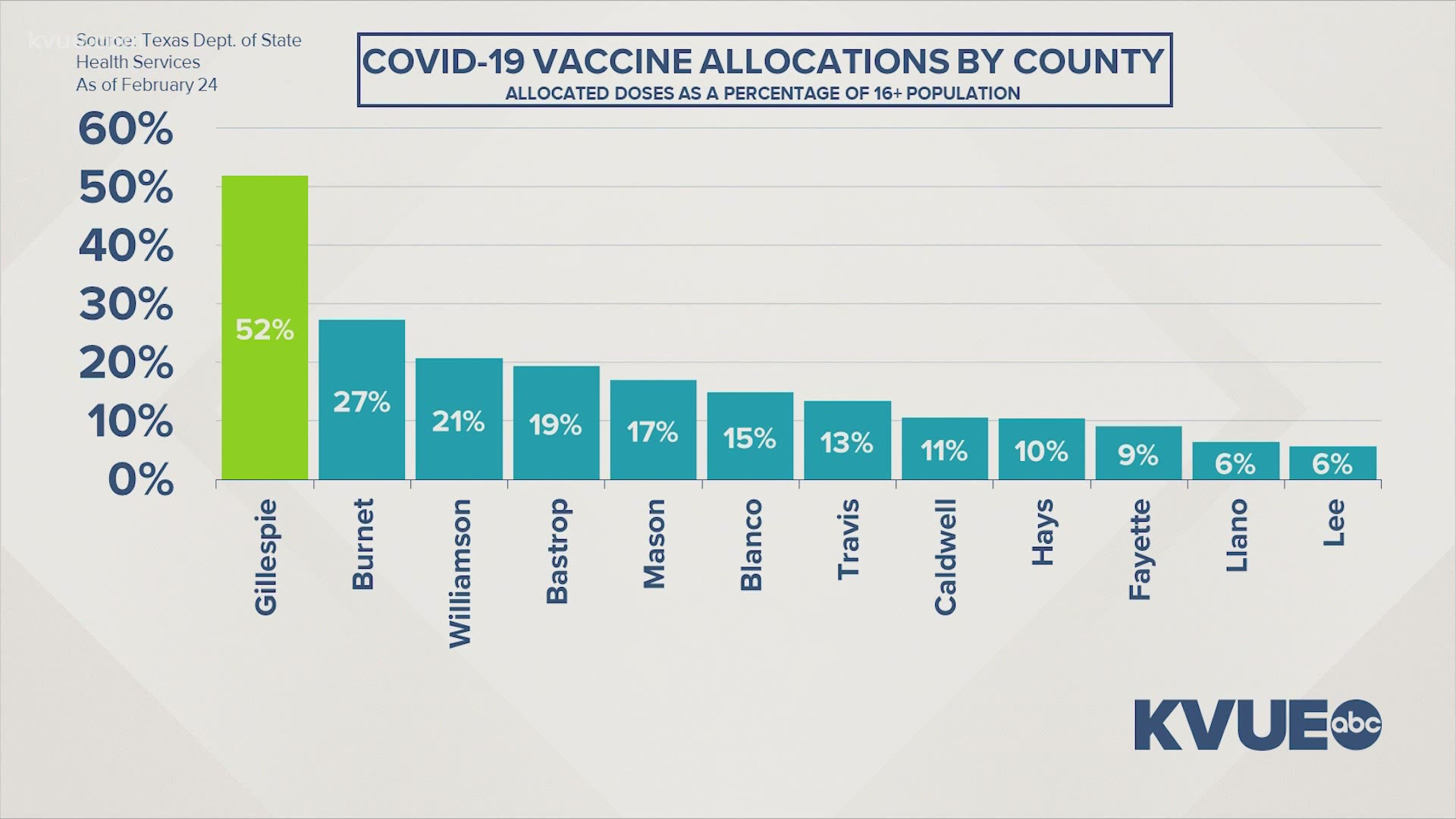CENTRAL, Texas — Editor's note: The video above includes out-of-date numbers that have since been updated in this article and in the images attached.
As COVID-19 vaccinations continue to roll out across Central Texas and people pile their names onto waitlists in hopes of getting one, some counties are getting their communities vaccinated more quickly than others.
The latest data from the Department of State Health Services (DSHS) shows counties are receiving vaccine doses disproportionately.
For example, Gillespie County providers have been allocated enough doses to vaccinate 52% of their eligible population, the highest in Central Texas.
Meanwhile, Lee and Llano counties are at the bottom of the list, only having received enough doses to vaccinate 8% and 10% of their communities, respectively.


Chris Van Dusen, a spokesperson for DSHS, said the goal is to make vaccine distribution as equitable as possible, but vaccine distribution depends, in part, on the kind of providers each county has.
Some counties have large hubs, like hospitals, while other counties only have smaller pharmacies that cannot handle as large of vaccine allocations at once.
"It just can't be as much because of the nature of those businesses and those providers," Van Dusen added.
However, DSHS encourages people to go where they can find a vaccine, especially to counties that are ahead of the curve in getting their community vaccinated.
After eagerly waiting to get a vaccination appointment in Williamson County, Cedar Park resident Kathy Goeke decided to go elsewhere. That is when she signed up for an appointment in Bell County.
"It was a seamless process. It took 10 minutes to get registered," Goeke said.
Goeke and her husband, who also got the shot, are in group 1B.
"I had nothing against [Williamson and Travis Counties]. We were just going to have to wait longer before it was our turn," Goeke said.
They drove to the vaccination site and got the vaccination within 15 minutes of arriving.
Vaccine allocations are not restricted to people within their own counties. Yet, Van Dusen said many people choose to stay within their own counties to get it.
DSHS even created vaccination hubs for that purpose – to serve a wider area.
Meanwhile, counties with more vaccine allocations may be reaching the end of their need for groups 1A and 1B.
DSHS has heard of some areas already servicing group 1C and beyond. They are asking providers to follow state guidelines by letting the state know when their county has completed servicing those groups, so those allocations can go elsewhere.
Alternatively, those providers can work with local organizations that may be able to identify any more seniors still in need of the vaccine.
However, at the end of the day, Van Dusen said they do not want any of the vaccine going to waste.
"We would much rather you vaccinate just anybody who's willing rather than let that vaccine go to waste. So that would be a reason where it is OK to vaccinate someone outside of that 1A or 1B population," Van Dusen said.
If individuals sign up for vaccination in a different county than they originally planned, county leaders ask that those individuals cancel their original appointments to help make vaccine distribution more efficient.
PEOPLE ARE ALSO READING:

